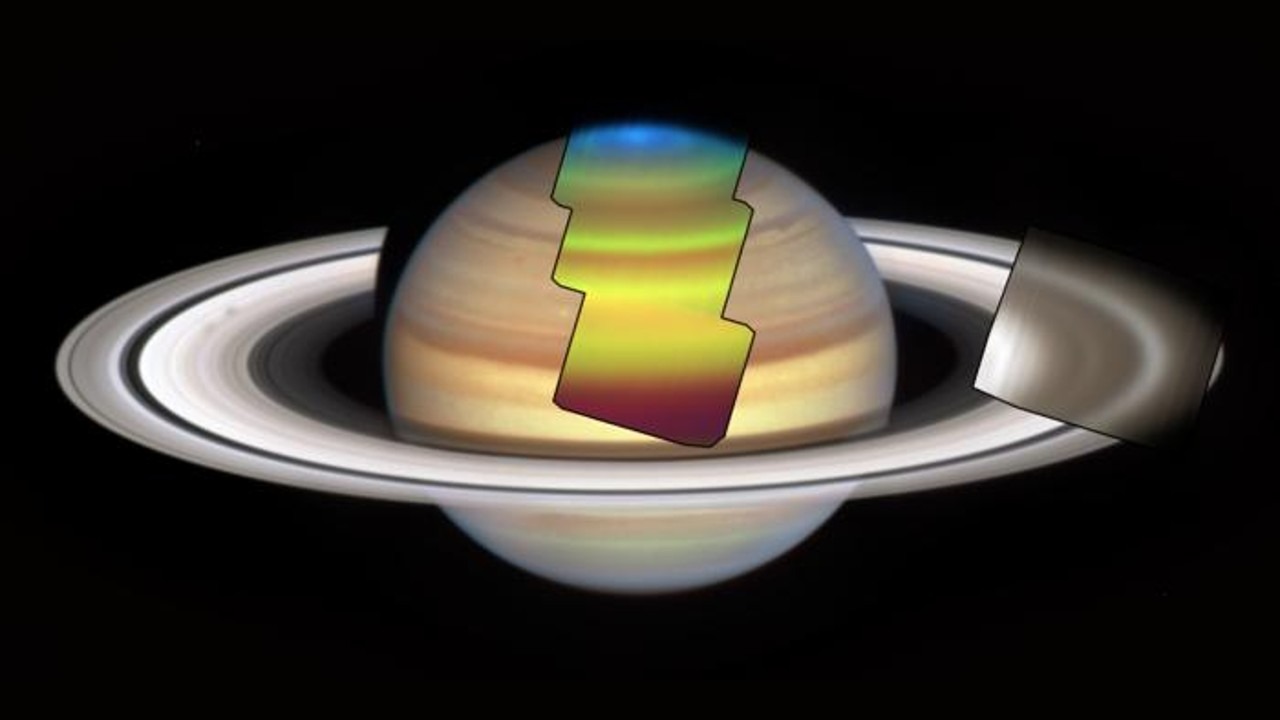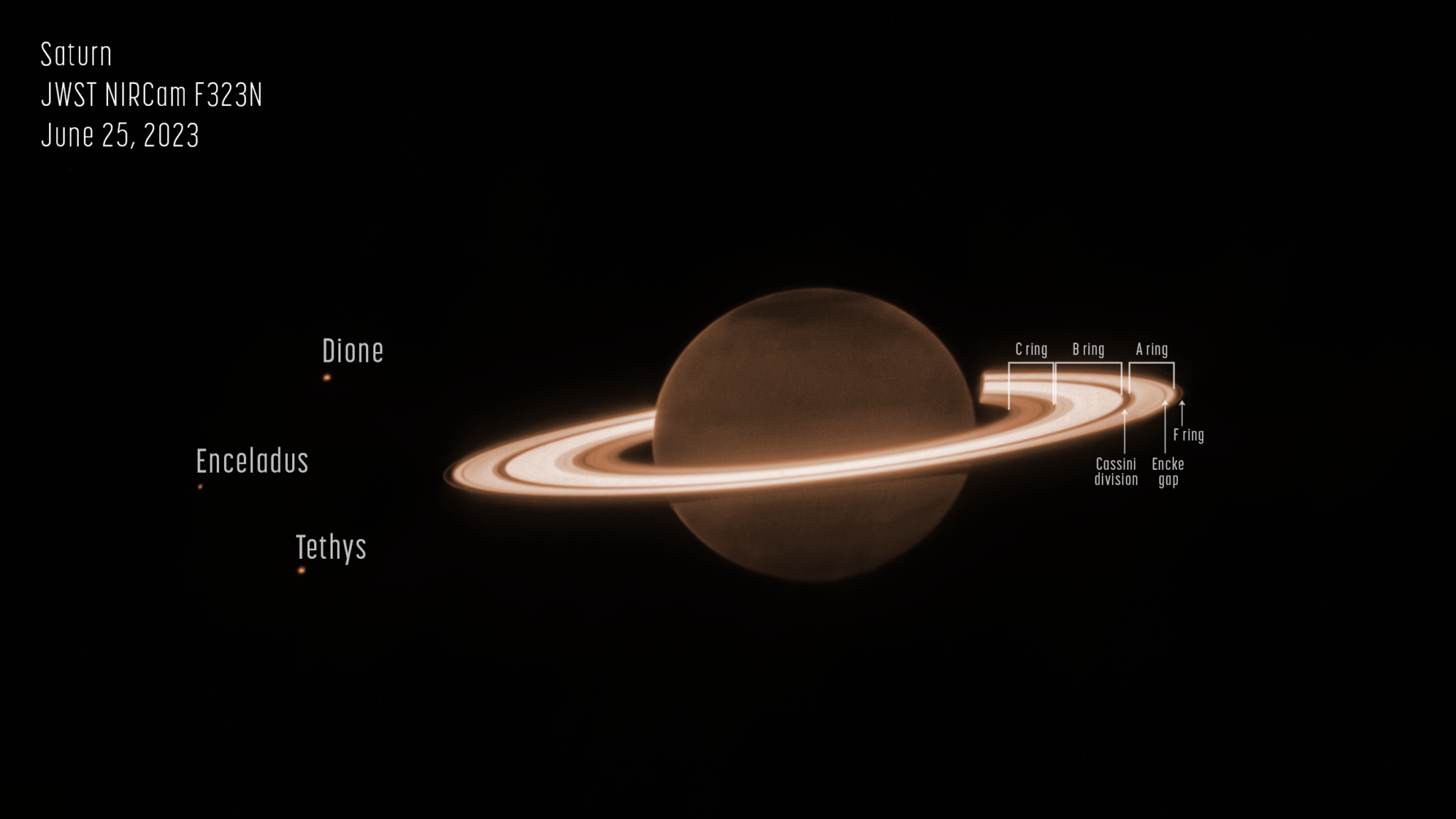Scientists are studying the changing seasons on Saturn thanks to observations using the James Webb Space Telescope (JWST). Recent observations made in November 2022 by a team of scientists from the University of Leicester revealed interesting details of the seasons on this ring-shaped planet.

Using the JWST Mid-infrared Instrument (MIRI), astronomers studied Saturn’s atmosphere in the infrared spectrum. It lies outside the visible range for us. Thanks to MIRI, it was possible to measure the temperature of the planet’s atmosphere, identify the presence of various chemical compounds, and also study the stormy clouds located in the upper part of Saturn’s atmosphere, in the stratosphere.
Interesting features of Saturn
Saturn is a gas giant and the sixth planet from the Sun. It also has its seasons similar to Earth. The main reason for this is the inclination of the axis of orbit of Saturn to the Sun, which is approximately 26.7°, similar to the inclination of the Earth at 23.5°. However, due to Saturn’s much larger orbit, the seasons on this planet last much longer — about 7.5 Earth years.

Saturn orbits the Sun in 29.4 Earth years, which leads to long seasons. JWST observations help scientists better understand these long seasons and the phenomena that occur during their change. It is important to note that the JWST data complements the data collected by NASA’s Cassini-Huygens spacecraft, which has been observing Saturn for 13 years during its winter and spring seasons.
Result of 13 years observation
The new JWST observations were combined into an animation illustrating changes on Saturn in various infrared light ranges, similar to observations of the changing seasons on Earth by changing the color of leaves on trees.
The animation shows the thermal radiation of Saturn’s north pole, represented by a bright blue color, as well as warm and bright areas of the planet’s atmosphere, reflected in yellow. The temperature contrast can be observed with the help of purple areas, which represent cold regions of the atmosphere. The striped appearance of the planet is clearly visible at wavelengths of light in Saturn’s troposphere, the lowest layer of its atmosphere.
Giant vortices
The animation also includes data collected by the Hubble Space Telescope in visible light in September 2022. These data were added for comparison with JWST observations. JWST observations also revealed the presence of a polar cyclone (NPC) at Saturn’s north pole. It has a diameter of about 1,500 kilometers. This cyclone is surrounded by an area of warm gases. These gases were observed in the spring when they gathered in the northern hemisphere of Saturn and were named the north-polar stratospheric vortex (NPSV).
These warm vortices swirl in the high layers of the gas giant’s stratosphere and heat up during Saturn’s summer season. In 2025, the planet will experience the autumnal equinox, when the Sun will be directly over the equator of the planet. Subsequently, the NPSV will begin to cool down and, accordingly, will disappear when the northern hemisphere is completely immersed in autumn.
Difference in the results of observations
It is important to note that the JWST infrared data reveal a different temperature distribution in Saturn’s stratosphere compared to those collected by the Cassini-Huygens spacecraft. It conducted observations in the winter and spring in the north of the planet. There is also a difference in the distribution of gases in the atmosphere of Saturn between the observations of JWST and Cassini due to the different direction of air flows during different seasons.
The selection of Saturn as a research object for JWST turned out to be an important stage in the study of our neighbors in the Solar System. The giant planet is a difficult object to observe due to its large size and brightness, which complicate the operation of the MIRI instrument. For the first time, MIRI could study only a small part of Saturn because of its brightness and distance from Earth.
Earlier we reported on: why Saturn’s moons amaze us.
According to space.com
Follow us on Twitter to get the most interesting space news in time
https://twitter.com/ust_magazine

